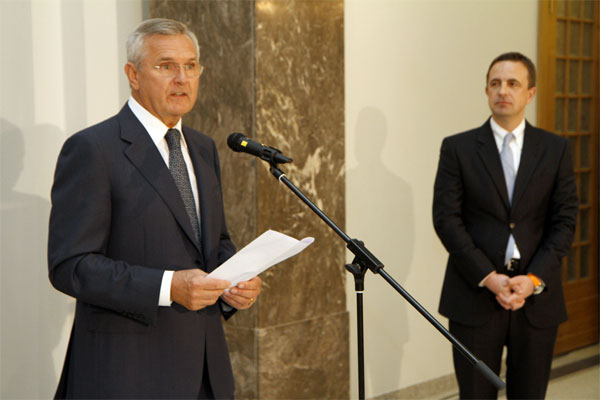
A front page article from the Aug. 11, 1920, edition of the Rīga daily newspaper Jaunākās Ziņas reports the news of the Latvian-Russian Peace Treaty. (Illustration by Andris Straumanis)
In August, Latvia marks three anniversaries worth noting. On Aug. 11, 1920, Russia signed a peace treaty with Latvia. Nineteen years later, on Aug. 23, 1939, the Soviet Union signed a non-aggression pact with Nazi Germany.
This promise of non-aggression between Stalin and Hitler led to one of the bloodiest wars in human history and put an end to peace and independence in Latvia. On Aug. 21, 1991, Latvia restored that peace and regained its independence.
Of all the parties involved in these three proclamations and declarations of August, only the Republic of Latvia seems to still exist. The Soviet Union self-destructed in 1991, Nazi Germany was dismantled in 1945 (also in August, at the Potsdam Conference), and the Federal Socialist Republic of Russian Soviets, which served as the government of Russia in 1920, is a historical footnote as well.
For Latvia, the 1920 peace treaty with Russia is one of the cornerstones of its statehood, because it ended the last remaining threat to the independence that Latvia had declared in 1918, and opened the doors to full international recognition of Latvia’s sovereignty. (The United States did it in 1922.) It also played a legally compelling role in preserving the legitimacy of Latvia’s suspended sovereignty during 50 years of Soviet occupation, and was often cited after Aug. 21, 1991, when countries around the world restored their relations with a restored Republic of Latvia.
Earlier this month President Valdis Zatlers opened the exhibition “From August to August. The Latvian – Russian Peace Treaty,” at the Latvian National History Archives to commemorate the 90th anniversary of the signing of the Latvian–Russian Peace Treaty. The exhibition was organized together with the Latvian Foreign Ministry at the initiative of former Foreign Minister Māris Riekstiņš. In his remarks at the opening, present Foreign Minister Aivis Ronis called the treaty “Latvia’s covenant with the world.” Both Ronis and Riekstiņš stressed the importance of linking the past with the present.
Memories of the Aug. 23, 1939 Molotov-Ribbentrop Pact also played a leading role in Latvia’s remarkable drive to restore its independence in the late 1980s. The first massive demonstration to protest this pact took place in Rīga on Aug. 23, 1987, at the Freedom Monument. Two years later on this day, 2 million Latvians, Lithuanians and Estonians joined hands across the length and breadth of their countries to announce their intention to restore their independence. The “Baltic Way” of Aug. 23, 1989, led to independence for the Baltic countries in August 1991. From August to August, indeed.
So far, we have passed the mid-point of August 2010, and no new pacts, peace treaties or proclamations of major historical consequence have occurred. Latvia is completing two decades of restored independence, the global economic crisis of the last few years seems to be abating, and we are talking more about the record-breaking heat than recorded dates in history.
Of course, the political atmosphere in Latvia is heating up because we face another parliamentary election on Oct. 2, but that’s par for the course in a lively democracy. While candidates argue about prescriptions for the future, it is still valuable to reflect on the ironies of the past. We established our 1st Saeima (parliament) in 1922, thanks in part to the Latvian-Russian Peace Treaty of 1920. After our 4th Saeima (elected in 1931), Latvia lost its independence thanks to the Molotov-Ribbentrop Pact. And in 1993 we elected our 5th Saeima, thanks to restoration of independence in August 1991.
Now, thankfully, we elect our 10th Saeima. We only managed four sittings of parliament before World War II, but are now approaching our sixth following the end of the Cold War. For Latvians, August is not just a bridge between summer and fall, but also a fitting time to look into the past, so that we can better plan our future. It always pays to look both ways before crossing any street.




